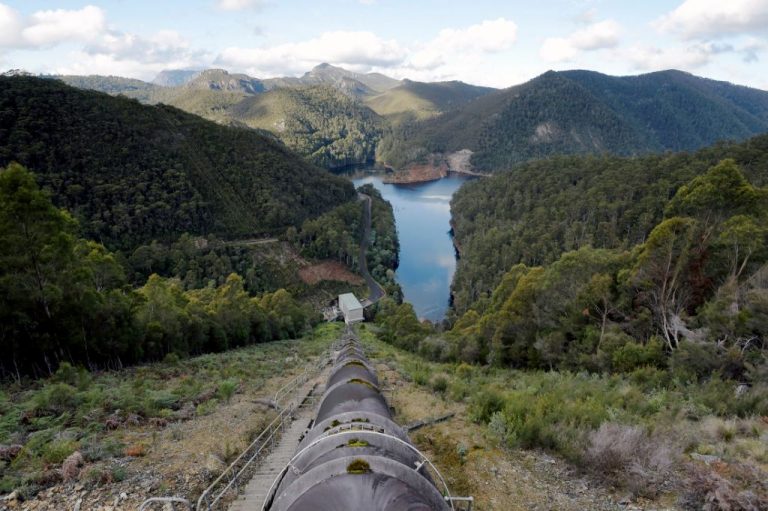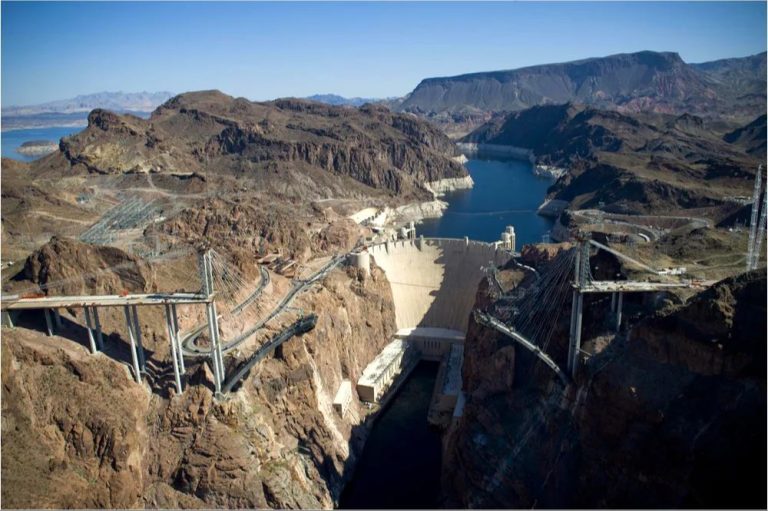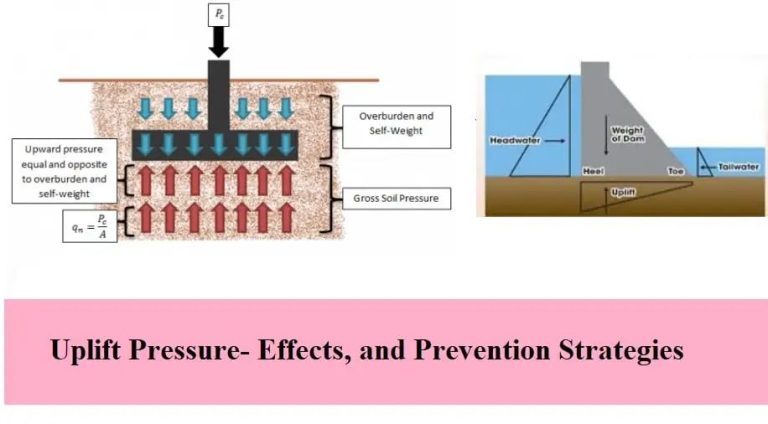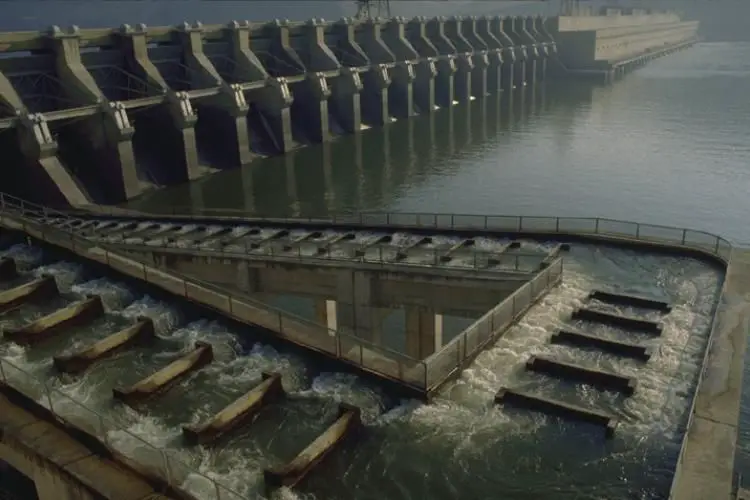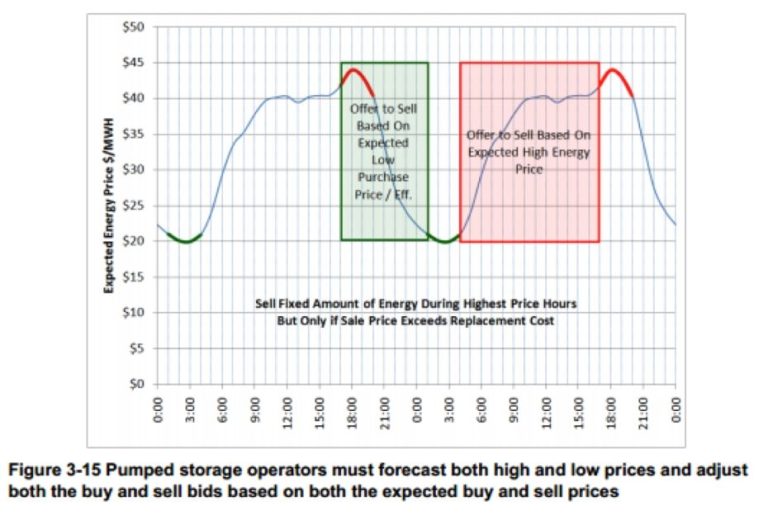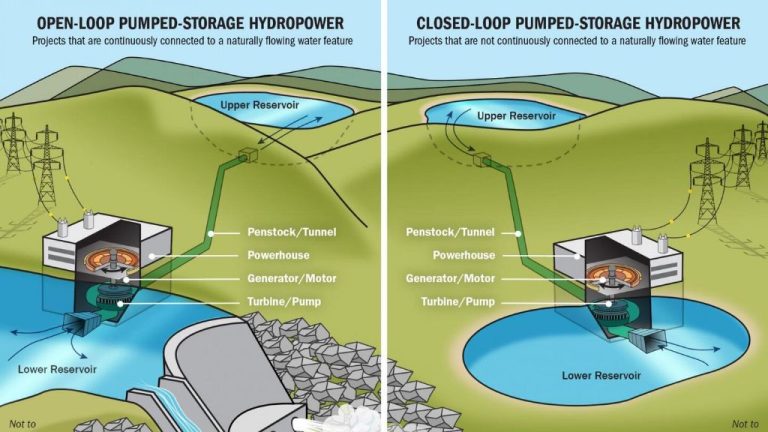What Is The Difference Between A Hydropower Plant And A Nuclear Power Plant?
Overview
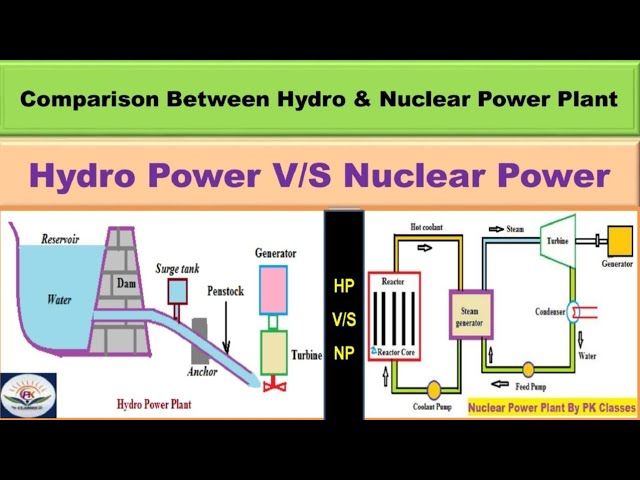
Hydropower plants utilize the energy of flowing water to generate electricity. They use turbines that are spun by moving water, which then powers a generator to produce electricity. The water flows through a dam or is impounded in a reservoir behind the dam and is released through the turbines to create power. Hydropower is a renewable source of energy.
Nuclear power plants use the heat generated from nuclear fission occurring inside a reactor to convert water into steam. The steam then spins a turbine which powers a generator to produce electricity. Nuclear fission involves splitting uranium atoms, which releases a large amount of heat energy. Uranium is a non-renewable resource used for fuel in nuclear reactors.
Fuel source
The key difference in fuel sources between hydropower and nuclear power plants is that hydropower plants use the energy from moving water as their fuel source, while nuclear plants use uranium or plutonium as fuel to generate electricity through nuclear fission reactions (1).
Hydropower plants utilize the kinetic energy from flowing water, often from dams, to turn large turbines which then generate electricity. The water cycle continuously replenishes the water in rivers and streams, making hydropower a renewable energy source (2).
In contrast, nuclear power plants use radioactive elements like uranium or plutonium. These fuel rods are inserted into the nuclear reactor core, where nuclear fission reactions produce heat that is used to boil water into steam to spin turbines. While the supply of radioactive elements is finite, they can yield much greater energy density than water.
Environmental impacts
Hydropower and nuclear power plants have different environmental impacts. Hydropower relies on dams and reservoirs that can disrupt natural waterways and displace wildlife 1. Nuclear plants require large amounts of water for cooling and can raise local water temperatures, but have a smaller physical footprint than hydropower reservoirs2. Both produce minimal emissions during operation. However, the nuclear fuel cycle from mining to waste disposal does create radioactive pollution risks. Overall, hydropower’s ecosystem and habitat disruption is weighed against nuclear’s risks of radioactive contamination.
Safety
When it comes to safety, there are some key differences between hydropower plants and nuclear power plants. Nuclear power plants carry the risk of a nuclear meltdown, which can release dangerous radiation into the environment. Major nuclear accidents like Chernobyl and Fukushima have shown the catastrophic impacts a nuclear meltdown can have. Radioactive waste from nuclear plants also needs to be carefully stored for thousands of years to prevent radiation leaks (Ritchie, 2023).
In contrast, hydropower plants do not carry the same risk of catastrophic accidents and radioactive contamination. However, dam failures can cause downstream flooding, resulting in loss of life and property damage. Over 200 dam failures worldwide in the 20th century caused at least 8,700 deaths (Business Insider, 2017). Safe construction, regular maintenance and monitoring can help minimize dam failure risks.
Overall, hydropower plants pose lower radioactivity risks and waste handling challenges than nuclear plants. But large dams still require oversight to prevent flooding disasters.
Cost
The construction costs for hydropower plants are generally lower than nuclear power plants. The average cost to build a large-scale hydropower plant in the US is around $2,000 per kW, while nuclear plants cost closer to $6,000 per kW. However, nuclear plants have much lower fuel and operating costs over their lifespan. Nuclear fuel only accounts for about 28% of the cost of nuclear power, compared to about 80% of operating costs for hydropower plants.
According to the World Nuclear Association, nuclear energy averages around 4 euro cents per kWh, comparable to hydropower. Coal is over 4 cents per kWh, gas ranges from 1.3-2.3 cents per kWh, and wind energy is often cheaper than nuclear. However, factors like capacity factor and cost variances make direct cost comparisons complex.
Sources:
Nuclear Power Economics | Nuclear Energy Costs
Efficiency
Nuclear power plants have very high capacity factors, typically around 90-95%, meaning they produce maximum power over 90% of the time (1). This is much higher than other energy sources like solar or wind which rely on weather conditions. The typical capacity factor for hydropower plants is around 35-60% (2).
In terms of conversion efficiency, nuclear power converts about 33% of the nuclear energy released by fission into electricity. Hydroelectric plants convert about 90% of available energy into electricity, but the available energy depends greatly on geography and weather. Overall, nuclear power is generally more energy dense and reliable than hydropower (3).
(1) https://homework.study.com/explanation/which-is-a-more-efficient-energy-source-nuclear-or-hydroelectric-which-is-more-efficient-energy-source-nuclear-of-hydroelectric.html
(2) https://inis.iaea.org/collection/NCLCollectionStore/_Public/49/009/49009723.pdf
(3) https://www.energy.gov/ne/articles/nuclear-power-most-reliable-energy-source-and-its-not-even-close
Location
Hydropower plants must be located on a river or body of water with sufficient flow and elevation drop to produce electricity. According to the U.S. Energy Information Administration, the three states with the most hydropower generation are Washington, Oregon and California1. The Northwest region of the United States has ideal terrain and water flow for hydropower dams.
Nuclear power plants require large amounts of water for cooling, so they are often located on the coast, a lake, or river. However, they can be sited anywhere with access to sufficient water. Nuclear plants also need to be located away from major population centers for safety reasons.
Output
One key difference between hydropower and nuclear power plants is the consistency of their electrical output. Nuclear power provides steady “baseload” generation, meaning the plants provide a constant supply of electricity regardless of demand fluctuations. Nuclear plants operate at full capacity over 90% of the time.1 In contrast, the output of hydropower plants varies more throughout the day and across seasons depending on water flow. During periods of peak electricity demand, hydropower plants can increase their output. However, their overall capacity factor, or average output over time compared to maximum output, is around 56%.2 So while both sources help meet electricity needs, nuclear provides consistent baseload generation while hydropower offers more flexibility.
Lifespan
The lifespan of a hydropower plant can vary greatly depending on the size and design of the project. Smaller hydropower plants may have lifespans of 50-80 years, while larger facilities can operate for over 100 years with proper maintenance and upgrades. Some of the oldest working hydropower plants in the world are over 100 years old.
The intended lifespan of a nuclear power plant is typically 40-60 years, though with proper maintenance and retrofits the operational life can be extended. For example, in the United States many nuclear plants have applied for and received 20 year operating extensions, bringing their total lifespan to 60-80 years. According to the IAEA, the world’s average nuclear power plant lifespan is around 50 years.1 However, well maintained plants can operate much longer, with some facilities expected to reach 80+ years of service.2
Sustainability
When comparing sustainability of hydropower plants versus nuclear power plants, there are some key differences. Hydropower is considered a renewable energy source, as it relies on the water cycle and rain to continuously replenish water in rivers and reservoirs (Energy.gov). Nuclear power relies on uranium mining and enrichment, which produces radioactive waste. While nuclear power plants themselves produce zero emissions, uranium mining and waste disposal can have environmental impacts.
Hydropower produces no direct waste, while nuclear power generates radioactive waste that must be carefully contained, transported, and stored. There are risks if radioactive waste leaks into the environment. Spent nuclear fuel rods can remain dangerous for thousands of years (Our World in Data).
Overall, hydropower is considered more renewable and sustainable than nuclear power given its fuel source and lack of radioactive waste. However, nuclear advocates argue that uranium supplies could last for decades with improved reactors, and that containment procedures for waste are adequate if properly managed and regulated.

